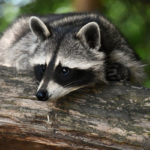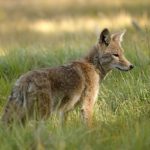Yes, Copperhead snakes can climb trees. They are often seen in low branches, seeking prey or sunbathing.
Key Takeaways
- Copperhead snakes are primarily ground-dwelling but can climb trees when necessary.
- They use their muscular bodies to ascend low branches and shrubs for hunting, escaping threats, or regulating body temperature.
- Climbing behavior in copperheads is relatively rare but documented through instances and expert testimonials.
- Awareness and safety measures are crucial for those in copperhead-inhabited areas to minimize the risk of encounters.
- AAAC Wildlife Removal offers knowledge and services to promote safe and respectful interactions with wildlife.
Copperhead snakes, known scientifically as Agkistrodon contortrix, are a fascinating species native to North America. Recognizable by their distinctive copper-colored heads and patterned bodies, these snakes often provoke both curiosity and caution among those who encounter them.
Typically found in wooded areas, rocky hillsides, and near water sources, copperheads are skilled at blending into their surroundings, making them intriguing subjects for nature enthusiasts and herpetologists alike. However, a question that often arises is whether these ground-dwelling serpents possess the ability to climb trees, adding an element of surprise to their already enigmatic behavior.
Exploring the climbing capabilities of copperhead snakes not only satisfies a natural curiosity but also holds practical implications for safety and wildlife understanding. If these snakes can indeed ascend trees, it could alter how people perceive and interact with their environment, especially in regions where copperheads are prevalent.
At AAAC Wildlife Removal, we are dedicated to providing comprehensive information and safe solutions for dealing with wildlife encounters. This article delves into the behaviors, anatomical features, and documented instances that reveal whether copperhead snakes climb trees, offering valuable insights for those sharing their habitat with these captivating creatures.

Copperhead Snake Behavior and Habitat
Copperhead snakes are primarily nocturnal, becoming especially active during the warmer months. They are ambush predators, relying on their camouflage to remain unseen while they wait for prey such as rodents, birds, frogs, and insects. Their hunting strategy involves lying motionless and striking quickly when an unsuspecting prey comes within reach. This sit-and-wait tactic is facilitated by their heat-sensing pits located between the eyes and nostrils, which allow them to detect warm-blooded animals even in the dark.
These snakes thrive in a variety of habitats, including deciduous forests, rocky hillsides, wetlands, and areas near streams and rivers. Copperheads are also known to inhabit suburban areas, where they can sometimes be found in gardens, under porches, or in woodpiles.
Their adaptability to different environments is a key factor in their widespread presence across the eastern and central United States. Despite their adaptability, copperheads prefer areas with ample cover and moisture, which helps them regulate their body temperature and remain hidden from predators.
Climbing Abilities of Copperhead Snakes
While copperhead snakes are predominantly ground dwellers, their physical capabilities do not entirely preclude them from climbing. Anatomically, copperheads possess strong, muscular bodies that can support their weight when climbing. Unlike some other snakes that are more adept at climbing, such as rat snakes, copperheads lack the specialized scales that provide additional grip. However, their climbing ability is not entirely absent and they can ascend low shrubs, rock piles, and occasionally, trees.
Comparative studies with other snake species reveal that copperheads have a moderate ability to climb, often driven by specific needs such as hunting or escaping threats. For instance, rat snakes, which share similar habitats, are excellent climbers and often ascend trees to hunt for birds and their eggs. Copperheads, while not as proficient, may climb to reach prey, avoid predators, or explore their surroundings. Expert opinions suggest that while tree climbing is not a common behavior for copperheads, it is within their physical capabilities, especially in environments that necessitate such actions.
Documented Instances and Evidence
Although copperhead snakes are not renowned for their climbing abilities, there have been several documented instances and anecdotal reports of these snakes found in trees or elevated locations. Wildlife biologists and herpetologists have occasionally observed copperheads resting on low branches or entwined in shrubs. Such observations are typically rare and often surprise those who encounter these snakes in such unexpected places.
Photographic and video evidence, while not abundant, does exist and supports these claims. For instance, a few wildlife enthusiasts and researchers have captured images of copperhead snakes coiled in low-hanging branches, seemingly comfortable in their elevated perches. Additionally, testimonials from herpetologists indicate that while copperhead snakes do not frequently climb, they are capable of doing so when motivated by certain factors. These instances, though not the norm, provide compelling evidence that copperheads possess the ability to climb, albeit not as proficiently as some other snake species.
Reasons and Purposes for Climbing
Understanding why copperhead snakes might climb trees involves examining their behavior and survival strategies. One primary reason for climbing is the pursuit of prey. Copperheads are opportunistic feeders, and if a potential meal is located in an elevated position, they may climb to capture it. This behavior is particularly likely in environments where prey such as birds, small mammals, or insects are accessible in low branches or shrubs.
Another reason for climbing is to escape from predators or environmental threats. Climbing can provide a temporary refuge from ground-based dangers, such as larger predators or human activity. Additionally, copperheads might climb to regulate their body temperature, seeking warmer or cooler spots as needed.
Trees and shrubs can offer such microhabitats, allowing the snakes to thermoregulate more effectively. Finally, climbing can be part of exploratory behavior, as copperheads navigate their environment to find suitable habitats or breeding grounds. These factors collectively explain why, despite their primarily terrestrial nature, copperhead snakes occasionally venture into the trees.
Safety Considerations for Humans
Understanding the climbing abilities of copperhead snakes is crucial for ensuring safety, especially for those living in or visiting areas where these snakes are common. While it is rare to encounter a copperhead in a tree, being aware of this possibility can help prevent unexpected encounters.
For hikers and campers, it is advisable to stay alert and avoid placing hands or feet on tree branches or shrubs without first checking for the presence of snakes. Always use a flashlight when navigating through wooded areas at night to spot any potential dangers.
Homeowners should take precautions to minimize the likelihood of copperheads entering their yards or homes. Keeping gardens and yards well-maintained, with grass trimmed and debris cleared, can reduce hiding spots for snakes. Installing snake-proof fencing and sealing any gaps or holes in the exterior of homes can further deter these reptiles from entering living spaces.
If you encounter a copperhead snake in a tree or elsewhere, it is best to keep a safe distance and contact a professional wildlife removal service, such as AAAC Wildlife Removal, to handle the situation safely and humanely.
Conclusion
Copperhead snakes, while primarily ground-dwelling, do possess the ability to climb trees, though this behavior is not commonly observed. Their muscular bodies and opportunistic nature allow them to ascend low branches and shrubs when necessary, whether for hunting prey, escaping threats, or regulating their body temperature. Documented instances and expert testimonials provide evidence of their climbing capabilities, although these occurrences are relatively rare.
For those living in or exploring areas inhabited by copperheads, understanding their behavior and taking appropriate safety measures is essential. By staying informed and vigilant, humans can coexist with these fascinating snakes while minimizing the risk of unexpected encounters. At AAAC Wildlife Removal, we are dedicated to providing the knowledge and services needed to ensure safe and respectful interactions with wildlife.














